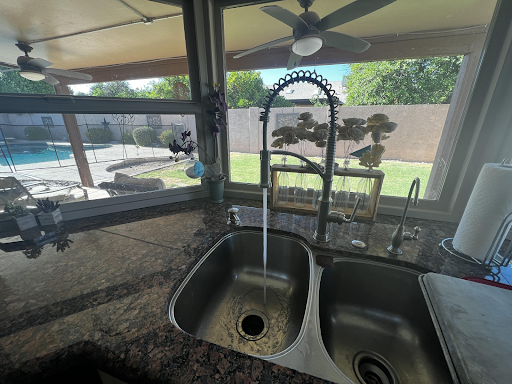
A recirculating heat pump is basically what it sounds like; a pump that recirculates hot water throughout your home


A recirculating heat pump helps to save water by drawing the unused hot water back to your water heater via a recirculating manifold, or if your home was built with a recirculating loop called a plumbing loop.
The manifolds (or plumbing loop) return the water to the water heater where it can stay warm, reducing the need to heat the additional water. A recirculating pump also helps avoid wasting water as you wait for it to heat up after turning a fixture on. When the unused hot water is drawn back to the water heater, new hot water is constantly pumped into its’ place.
Think of the way a recirculating heat pump works like a highway that splits off into two lanes.
The first lane keeps going forward to your fixtures, while the other lane makes a U-turn (via the manifold or plumbing loop) and goes back in the direction that it came from. Having this system in place allows for hot water to be on demand at your faucets and fixtures while avoiding the need to heat extra water or waste cold water while you wait.
One thing to note is that recirculating pumps are installed in addition to your water heater.
This means they are separate but work together to provide you with hot water on demand. Because they are separate units, if you turn off your water heater for any reason (going on vacation, living in a different city for part of the year, etc.) you will also need to turn off or unplug the recirculating pump. If you do not, the pump will continue trying to circulate the nonexistent water and will burn up the pump’s motor and cause it to stop working. If you are interested in scheduling an appointment to have a recirculating pump installed, you can call our office directly or email us here.
Frequently Asked Question
Q: How much energy does a recirculating heat pump use?
A: Recirculating heat pumps are generally energy-efficient, especially when compared to the cost of heating water that would otherwise go to waste. However, the exact energy usage can vary based on the model and how often it’s running. It’s always a good idea to check the specifications before making a purchase.
Q: Can I install a recirculating pump myself?
A: While some DIY enthusiasts might be tempted to install a recirculating pump on their own, we highly recommend having it professionally installed. This ensures that it’s set up correctly and safely and it often comes with the added benefit of a warranty for the installation.
Q: What happens if I forget to turn off the recirculating pump when I turn off my water heater?
A: If the recirculating pump continues to run without water to circulate, it can burn out the motor. This is why it’s crucial to remember to turn off or unplug the recirculating pump if you’re turning off your main water service for an extended period.
Q: Is a recirculating pump suitable for all types of water heaters?
A: Recirculating pumps are generally compatible with most types of water heaters, including tankless models. However, it’s always best to consult with a professional to determine the best setup for your specific needs.
Q: How do I know if my home is a good candidate for a recirculating pump?
If you find yourself waiting more than a few seconds for hot water, a recirculating pump could be a great solution to save both time and water.



